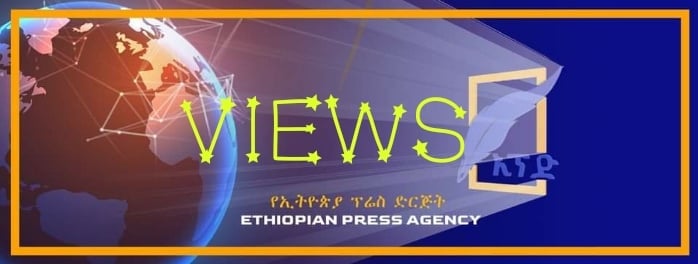
BY DANIEL ALEMAYEHU
The world calls Ethiopia as the water tower of Africa which it deserves. This is because the country is endowed with plenty of water resources in all corners of it. This country is also a home for one of the longest rivers in the world which is Abay or Blue Nile. Ethiopia is also a home for other twelve trans- boundary rivers. Though the country is blessed with plenty of such natural resources, all these Ethiopian rivers have done nothing except carrying away its water and eroding the fertile soil to the downstream countries.
In the course of history, the country has done less on the production and usage of its precious resources because of many constraints. Poverty, lack of literate man power, along with colonization effects and foreign pressure made everything hard for the nation. It is puzzling to say ‘Ethiopian is a poor country’ after having all these natural and spiritual resources. It is also mind blowing when people observe countries that are rich with very little natural resources compared with Ethiopia.
In the past decade, Ethiopia has admittedly started doing projects on irrigation and hydropower on different water resources. It has been a decade since Ethiopia put the foundation stone in Benishangul Gumuz Region, Juba, as a mark of commencement of the construction of the Grand Ethiopian Renaissance Dam (GERD) in 2011. This project is seen as the most important project that the country has ever started so far.
Unfortunately, countries from the downstream especially Egypt started complaining from day one. Questions may be raised as ‘To whom is Abay the matter of survival?’ From the narrative of the downstream countries, many may say Abay is the matter of life and death to Sudan, and especially to Egypt. Surprisingly, no one thinks that it is also a question of survival for Ethiopia too.
From the landscape and resources, Egypt is way better than Ethiopia in terms of economy. This is because the country has one of the biggest dams in the world, The Aswan Dam which was completed on July 21, 1970. It is 3,600 meters long, 980 meters wide at its base. Besides, it is 40 meters wide at the top, and 111 meters high. It consumed 43 million cubic meters of building material. Construction of the dam cost over 1 billion USD and took 10 years to complete. This dam has done a lot for the people of Egypt.
The question, ‘Why is that much important to build a mega project dam for Ethiopia?’ will be the key issue. For many reasons, building a mega project of hydropower is the core concern for the Ethiopian people. According to Fitsum Arega, Ethiopian Ambassador to the United States of America, building the GERD is not a matter of choice, but an economic and developmental necessity and the way out of poverty for a nation of over 112 million people. However, the downstream countries keep on shouting for the sole beneficiaries of the Nile based on their colonial agreements which Ethiopia took no part on.
In order to answer the above question why GERD is a question of survival, one of the main reasons is that Ethiopia has no back aquifer system. According to the material published by the University of Texas under the topic: ‘People and Place Curriculum Resources on Human-Environmental Interactions’, in Egypt, “if you dig a hole nearly anywhere, you will eventually strike water. In swampy areas, the water table is very close to the surface (or ground level), which is why marshy conditions are found there.” This shows that Egyptians have great aquifer system thanks to their biggest dam on Abay.
According to the study by Assefa Melesse and his colloquies on the surface water and ground water resources in Ethiopia, “The Rivers from the western side of central highlands and western plateaus of the country are flowing to the west and joining the Nile system. These rivers are Abay, Baro-Akobo, Mereb, and Tekeze basins and cover 39 percent of the land mass of the country. This section of the country has the major flow of surface water in the country. It accounts for about 70 percent of the estimated surface water flows in this section.”
In this case, Ethiopians must aggressively do projects on Abay for the benefit of the nation because it is simply learned that having bigger dam projects on water resources will have enormous benefits on the overall economic growth of a country. In addition, for the populous nation like Ethiopia, the country needs to have ample resources from the underground.
The other point that should be raised is even though the downstream countries have been claiming for the sole beneficiaries of the Nile by putting pressure on Ethiopia both inside and outside of the country; still the dam does not halt the flow of the water as it is a hydropower dam. If a dam is a hydropower dam, the water must flow to strike the turbines to generate electric power and flows downward. It is a simple physics that the water continues flowing out to the downstream countries as usual. The downstream countries will get their share unless they are greedy enough to use the water separately though their contribution is none or insignificant.
On the study conducted by Assefa Melesse and his colloquies, they stated: “Since most of the rivers are Trans-boundary, 97 percent of this estimated annual stream flow of the country flows out of Ethiopia into neighboring countries and only 3 percent of this amount remains within the country.” This exposes that even though Ethiopia is endowed with water resources, most of them leave the country as they are Trans-boundary Rivers, and the nation makes a very little use of these rivers when seen from the economic perspective.
Furthermore, Ambassador Fitsum added on his article, GERD helps to regulate and supply water to Egypt and Sudan during all the seasons and provide regional water capacity with less evaporation and prevent flooding to the downstream countries with no cost.
Based on the topography of Ethiopia, most of the African mountains are found in the country. Everyone may guess easily that the geographic topography of the country makes things hard to retain the trans-boundary water resources in a way that the people can use from them. The nation has low retention capacity. To support this idea, Assefa Melesse and his colloquies described that the total groundwater reserve of the country is 185 Billion Cubic Meters (BCM), which is distributed in an area of 924,140 km2 made of Sedimentary, Volcanic, and Quaternary rocks and sediments, including the highlands and the Rift Valley. In this estimation, the mean groundwater recharge for the entire country is assumed as 200 mm.
On the other side, according to ‘fanack water article’, Egypt can save 2.1 billion BCM deep underground water resource per year, and the total amount of deep groundwater is estimated at about 40,000 Billion Cubic Meters. From their colonial agreement, Egypt secured 55.5 BCM per year from the Nile River. Again, this river supplies 93 percent of Egypt’s annual renewable water resource. These figures indicate that Egyptians have benefited better from the Nile River than the country which is the origin of the water. Even with this resource, Egypt can live thousands of years when it is compared with Ethiopia, but it still complains about the Ethiopian water resource projects.
Therefore, GERD is the most essential project for the Ethiopian people with lots of benefits for the development and growth of the nation. From the narratives cascaded from the colonial era, only the downstream countries are the ones that are benefited. However, in the 21th century, Abay is also the matter of survival for the people of Ethiopia more than Sudan and Egypt.
As a result, the announcement of the second round filling of the dam cherishes the entire Ethiopians filling them with hope visualizing the prosperity they are aspiring to. As it has been said time and again, GERD is a symbol of the unity of Ethiopians from all corners of the country since it is self financed mega project. It is a project they are constructing with their tears, sweet and blood. Besides, though the rest of the world blocked any financial support for the dam, it is a flagship for the potential the people to finalize what they have begun.
Editor’s Note: The views entertained in this article do not necessarily reflect the stance of The Ethiopian Herald
THE ETHIOPIAN HERALD JULY 20/2021



